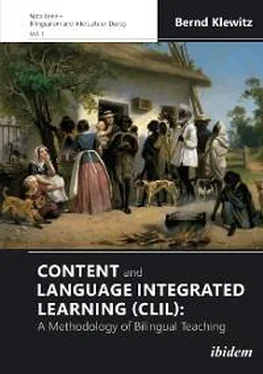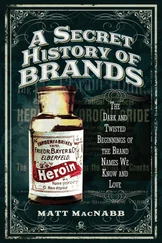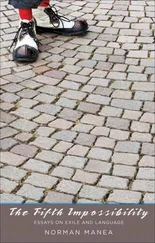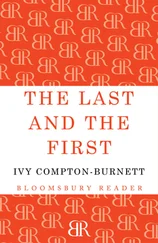The challenge that remained was to demonstrate the power of culture in shaping lives. It was nature versus nurture with the scales reset: against our sealed-off genes, there was our accumulation of collective knowledge; in place of inherited learning, there was the social transmission of that knowledge from generation to generation. "Culture" was experience raised to scientific status. And it combined with biology to create mankind. Boas sent his students off to learn how the delicate balance worked (ibid.).
When Margaret Mead came back from Samoa, her research and ensuing publications established a new view of the concept of culture and a utopian perspective with the recognition of unknown freedom.
The extremesof nature versus nurture are spanned by literature and philosophy as well. In The Tempest (1610/11) Shakespeare has his Prospero, the Duke of Milan, say about Caliban: “ A devil, a born devil, on whose nature nurture can never stick ” (IV, 1), who as the son of a witch is denied any possibility to escape slavery. About three hundred years later, Ortega y Gasset, spent part of his studies of Philosophy in Marburg/Lahn and came up with quite the opposite opinion: “ Man has no nature, what he has is—history ” ( History as a System , 1935). But in America, during the 1920s and 30s, the racist dimension of biological determinism—as so determinately fought by Boas—had peaked, not only in the revival of the Ku Klux Klan with four hundred new members but also with books on race and immigration such as The Passing of the Great Race (1916) by amateur anthropologist Madison Grant or The Rising Tide of Color (1920) by Lothrop Stoddard. Warning against the coming nonwhite population explosion after World War I, Stoddard’s racist book reappeared in F. Scott Fitzgerald’s The Great Gatsby (1925) when Daisy’s bullish husband Tom Buchanan provokes his wife and her cousin Nick with quotations from a book he calls “ The Rise of the Coloured Empires, by this man Goddard? …The idea is if we don't look out the white race will be—will be utterly submerged. It's all scientific stuff; it's been proved ” ( The Great Gatsby : 19).
The dire consequences of biological and racist determinism have culminated in the 20th century holocaust and would hopefully have been overcome by now. But have researchers in the meantime settled the nature-versus-nurture debate finally? Natural scientist Steven Pinker seems to say “no”—at least when he summarizes the situation in his book The Blank Slate—The Modern Denial of Human Nature (2002). It was John Locke in 1690 who envisaged the human mind as a blank slate, explaining everything people are and all their knowledge as malleable, easily influenced, trained and controlled, by their environment and experience. In his essay “ Why nature & nurture won’t go away ” (Pinker: 2004), Pinker argues, in a shift away from behaviorism, that the blank slate, the former cornerstone of behaviorism used to be “ the ultimate safeguard against racism, sexism, and class prejudice ” but was longer defendable:
Though human nature has been debated for as long as people have pondered their condition, it was inevitable that the debate would be transformed by the recent efflorescence of the sciences of mind, brain, genes, and evolution. One outcome has been to make the doctrine of the blank slate untenable. No one, of course, can deny the importance of learning and culture in all aspects of human life. But cognitive science has shown that there must be complex innate mechanisms for learning and culture to be possible in the first place (ibid.: 6).
Turning to language as a “ paradigm case ”, he maintains that acquiring languages is a human talent (also called “ instinct ” by him). Pinker summarizes “ a common position on nature and nurture among contemporary scientists ” as follows:
By now most scientists reject both the nineteenth-century doctrine that biology is destiny and the twentieth-century (sic!) doctrine that the mind is a blank slate. … modern biology has made the very distinction between nature and nurture obsolete. … Indeed, genes are expressed in response to environmental signals, so it is meaningless to try to distinguish genes and environments; doing so only gets in the way of productive research (ibid.: 7).
In a nutshell: a common realization in recent years has pointed at the fact that the question how much behavior—and language as a part of human behavior—is due to heredity or environment might be wrong in the first place. It would probably have to be replaced by investigating how much nature and nurture interact instead of defending extreme nativist or nurturist opinions. Similarly, the debate whether linguistic skills are innate (nature) or acquired (nurture) might be resolved by a combination of the two attitudes. Especially, a cognitive approach deals with processes in the brain that underpin language acquisition, socio-cultural approaches—preferred here!—reject the notion that SLA is a purely psychological phenomenon and attempt to explain language development in a social context. This will prove an encouraging idea for language teachers (and researchers). The assumption that all children are born with an instinctive mental capacity (mindful of Pinker’s dictum of language as an “ instinct ”) allows them to learn and effectively use language. The challenge for instructors here is to foster and enhance this mental capacity or instinct and create favorable methodological and didactic conditions, particularly when dealing with the double objective to teach language and content at the same time, as in CLIL programs.
3.4 The Neuro-biological View
In this context, the linguistic side of CLIL can draw on results from neuro-biological research(cf. Müller 2003, Videsott 2009, Ellis 1994) describing mental processes of language representation and functions. One of the findings has observed minor neural networking in processing abstract concepts, necessitating to anchor abstract contents in multi-modal ways and to include affective situations in language teaching such as role plays, cooperative learning and active participation in teacher-student dialogues. As tangible content effects greater neural networking the assumption of a definite language center in the brain seems to be evident—the question only is whether this capacity is innate or a result of active learning and whether there is a sensitive phase of this learning process/language acquisition in terms of student-age. A related finding concerns the neural transmission of L1 and L2 acquisition and if different parts of the cortex are involved; in this process neural substrate was found in different parts of the brain after seven years of age, on the other hand changes in the physiology of the brain during L2 acquisition were only established between the ages of 13 and 16 (Müller: 173). Neurophysiological examinations have, additionally, not been able to show coherent results of the existence of a sensitive or critical age of language acquisition in the long run (cf. ibid.: 174, Meisel: 200 f).
Most neurobiological studies refer to the question if a joint neural network is used for the acquisition of L1 and L2. It appears that late L2 learners’ language can be located in the left part of the cortex, the so-called Broca area, the part of the brain connected to speech production(Videsott: 162). Overall, a comprehensive neural network is observed in the classic language environment, including Wernicke’s area which is the part of the cerebral cortex linked to the comprehensionof written and spoken language (ibid.: 160). But many issues in the neural context of language acquisition remain unresolved; a common denominator, however, regards the L2 learning process as being influenced by languages that the learner already knows and confirms language transfer, especially as a bidirectional cross-linguistic influence.
Читать дальше












